Stocky Edwards turns 100!
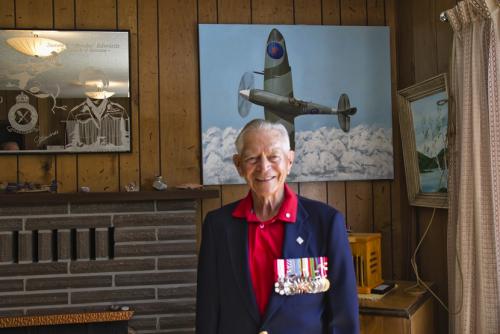
(Thanks to Canadian Aviation Historical Society. Find them at www.cahs.com)
James “Stocky” Edwards, a Canadian fighter pilot and ace during World War II who was heralded as his nation’s “top gun” over the North African desert in 1942 and 1943, died May 14 in Comox, British Columbia. He was 100.
Announcing the death on Facebook, Comox mayor Russ Arnott, citing the pilot’s family, gave no cause, although Mr. Edwards had had heart problems in recent years.
With the rank of wing commander, Mr. Edwards shot down a confirmed 19 Luftwaffe fighter planes and scored many more “probables,” the aircraft he put out of action but did not see hit the ground. He also destroyed at least 12 more enemy warplanes at their desert bases before they could take to the air.
Hitler’s Afrika Korps, commanded by Field Marshal Erwin Rommel, had been locked in battle with the Allies in North Africa until pilots like Mr. Edwards, a member of the Royal Canadian Air Force assigned to Britain’s Royal Air Force (RAF), engaged in aerial dogfights with the Luftwaffe and strafed and bombed the Germans on the ground to hasten their defeat.
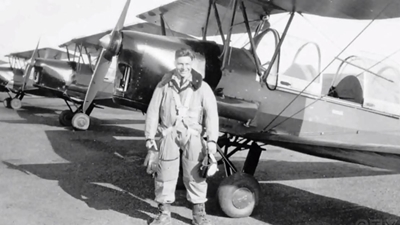
In those exchanges over North Africa, Mr. Edwards flew U.S.-built P-40 Kittyhawk fighters, far heavier and slower than the German Messerschmitt Bf 109, which made his achievements all the more remarkable. Over Italy and France later in the war, including on D-Day, he would switch to the more nimble British Spitfire fighters.
Physically, Mr. Edwards was anything but “stocky.” He was skinny as a young man, and the Toronto Globe and Mail once quoted some of his fellow fliers as saying he was “more like a wiry bantam weight.” Known as Eddie during the war, he only later got the nickname “Stocky” in honor of his fortitude.
In all, he flew 373 combat missions during World War II, mostly over North Africa but also to provide air support for the Allied landings in Italy in 1943 and 1944 and in Normandy on D-Day — June 6, 1944 — a rare “triple” among Allied pilots.
Mr. Edwards was a 20-year-old flight-lieutenant when he took off from a North African desert airbase for his first combat mission on March 23, 1942, as part of an RAF squadron. While escorting Allied light bombers, he and other fliers strafed a German ground base and, when engaged in an aerial dogfight with the Luftwaffe, he shot down a Messerschmitt Bf 109, his first “kill.”
The Toronto Globe and Mail quoted his son Jim Edwards as saying his father was a modest and humble man who was “slack in recording his victories” unless he was sure but had almost certainly shot down more than he had claimed, probably at least 22.
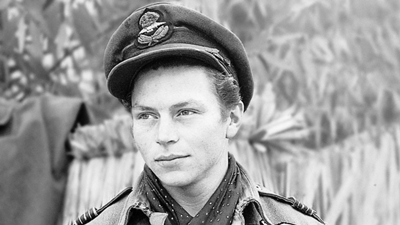
On June 17, 1942, for example, over Tobruk, Libya, Mr. Edwards, in his Kittyhawk, shot down a German Bf 109 but recorded it only as a “probable” rather than a kill since he did not see it hit the ground. Many years later, German records showed that the downed pilot was Otto Schulz, one of the Luftwaffe’s greatest fighter pilots, who died in the crash.
Mr. Edwards’s wingman that day was Australian pilot Ron Cundy, who witnessed the dogfight. “As I watched the 109 close in, Eddie applied a lot of right rudder and skidded out of the way," Cundy told the Globe and Mail years later. “The 109 was coming in too fast to make the necessary adjustment and as he overshot, Eddie swung back to the left, opened fire and shot him down. It was the coolest piece of aerial combat that I had ever seen.”
Jim Edwards told the Toronto paper that his father had 20/20 eyesight and had been a crack marksman as a youth when he used to shoot duck and other wildfowl on the prairies of Saskatchewan. While shooting at wildfowl, Mr. Edwards’s father had taught him to “lead” his target rather than shoot at it, according to Jim Edwards, who added that his father used the same technique as a fighter pilot.
Although Mr. Edwards scored most of his “kills” over North Africa, he went on to serve over Italy and France. In support of the Allied beach landings at Anzio, Italy, in February 1944, he shot down at least three German fighter planes.
In June that year, he flew a now-legendary British Spitfire to escort bombers as the Allies went ashore on the beaches of Normandy on D-Day. With Allied intelligence deceiving Nazi forces into thinking the landings would take place elsewhere, Mr. Edwards met no Luftwaffe resistance, and the bombers did their job.
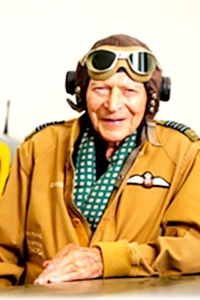
In addition to the Distinguished Flying Cross, awarded by the United Kingdom during the war, Mr. Edwards was named to the Order of Canada, one of that nation’s highest awards, in 2004. He was inducted into Canada’s Aviation Hall of Fame in 2013 and the following year was appointed to France’s Legion of Honor by President François Hollande for his services to France during the war.
James Francis Edwards was born in Nokomis, Saskatchewan, on June 5, 1921, one of six children. His parents lost their home in the Depression and moved to the small Saskatchewan town of Battleford in a region called the Canadian Prairies, where his father sought work.
At St. Thomas College in North Battleford, Mr. Edwards’s first love was ice hockey, and he was once scouted by the Chicago Black Hawks. “But I was small,” he told the Comox Valley Record on his 100th birthday. After graduating from high school, he volunteered for the Royal Canadian Air Force, although he had never flown before.
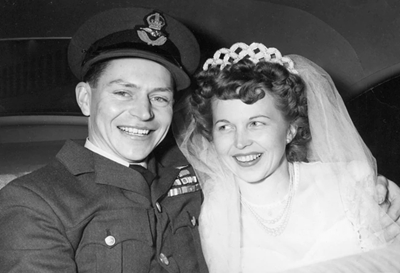
In 1946, he married Norma Hatcher, a nurse, and they had two children, Dorothy and Jeanne. Norma soon contracted polio and died. In 1951, he married Alice “Toni” Antonio, also a nurse, and they had two children, Angel and Jim. Mr. Edwards’s daughter Jeanne predeceased him. Survivors include his wife and three children as well as several grandchildren, great-grandchildren and great-great-grandchildren.
Back in Canada after the war, Mr. Edwards remained in the Royal Canadian Air Force, serving as a flying instructor, search and rescue pilot and commander of the first Canadian squadron to fly the Sabre jet fighter. He also held other assignments until his retirement to Vancouver Island in 1972, where his passion was wetlands preservation.
Along with writer Michel Lavigne, Mr. Edwards wrote the memoir “Kittyhawk Pilot” in 1983 and the non-fiction work “Kittyhawks Over the Sands: The Canadians & the RCAF Americans” in 2002.
“I’m proud in my quiet little way,” he told the Comox Valley Record when he turned 100. “I did 373 combat missions. You get sort of … you don’t know anything else. The day the war was over, it was a feeling of, ‘What do I do now?’ ”
Credit: Phil Davison, The Washington Post
Prior to the service at Christ the King Catholic Church, Edwards' daughter, Dorothy Edwards, shared some of her memories of her father with the media. "It's a really sad day. He's my dad and he's not here now, but he was a hero when we needed heroes and now we need them again," she said. Dorothy called her father an inspiration and noted that the funeral was being attended by many military personnel and friends who also admired him.
Edwards was active in various charities and outdoor activities right up until his death. "I think that he passed happily knowing that he did everything he could," said Edwards. "Almost all [his interests] had the outdoors in common and the environment," she said. "He was a hunter and a fisherman and a painter. He had a whole lot of [passions], more than hobbies because he did them so well and for so long."
Edwards was well known internationally for his achievements, even being decorated several times by both Canada and France. He was known for being humble, and his daughter says his children were unaware of their father's heroic past. "We didn't know at all about his heroism during the war and when we started to ask he would just pass it off," she said. "He was humble but proud in a very, very quiet way."
It wasn't until her father was approached by others that Edwards and her siblings realized the details of Edwards' past. "People started just coming to seek him out from all over the world, really. He would accommodate everyone. He would do that with strangers that were interested," said Edwards.
Two Canadian military CF-18s jets and a Cormorant helicopter conducted a flyover above the church as Edwards' casket was being moved Friday.
Credit: Gord Kurbis, CTV News Vancouver Island Journalist